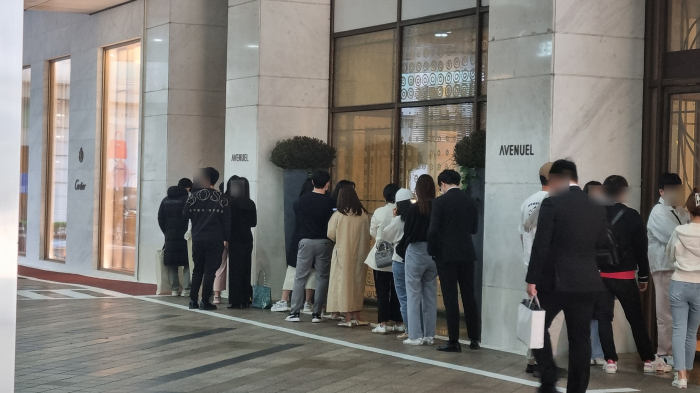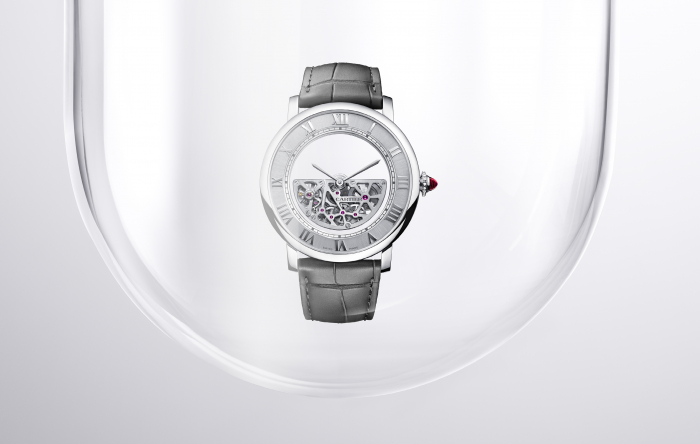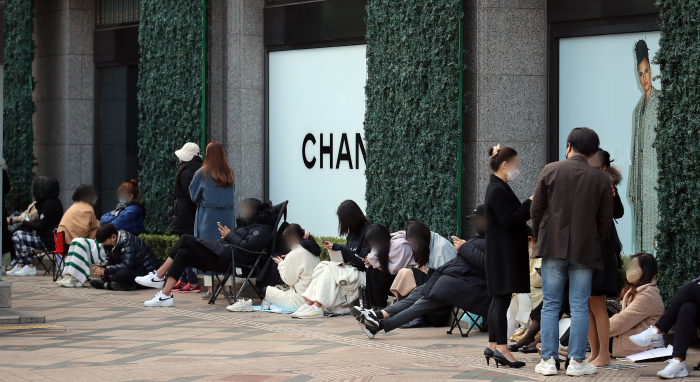South Koreans turned off by luxury fashion houses’ price hikes
No more lineups before opening hours outside Cartier and Chanel boutiques in Korea
By May 11, 2022 (Gmt+09:00)
LG Chem to sell water filter business to Glenwood PE for $692 million


KT&G eyes overseas M&A after rejecting activist fund's offer


Kyobo Life poised to buy Japan’s SBI Group-owned savings bank


StockX in merger talks with Naver’s online reseller Kream


Meritz backs half of ex-manager’s $210 mn hedge fund



A Cartier boutique inside a department store in Seoul’s posh Gangnam District was unusually slow on Tuesday.
The quiet ambience was in sharp contrast to just a couple of days previous when people lined up in front of the same store hours ahead of its opening.
In the world’s 10th-largest economy by nominal gross domestic product, an “open run” does not mean a theatrical show or performance without an end date.
The South Korean media uses the term to mean waiting in line before a store opening – usually at high-end designer establishments or even at sports apparel stores like Nike for limited edition sneakers.
The demand for luxury and limited items in Seoul is so high that even lining up for hours does not guarantee that one can purchase some of the most popular items before the store closes for the day.
The trend has even created new jobs; for those who stand in line for rich customers and from resellers who make money off from the difference between the original price and the premium they charge to sell the highly coveted items online.
The vanishing line at Cartier is thanks to price hikes effective as of Monday.
“The number of customers plummeted since yesterday so people can now enter the store without waiting,” a staff at the Cartier store told The Korea Economic Daily. “Many are leaving after checking the new prices.”

On Monday, Cartier raised the prices of its most popular items by 6 to 13%, ranging from watches to jewelry. Unlike its competitors in the industry, the upward adjustment was its first price increase in about a year.
The more popular items saw the biggest price jumps.
The price of a Tank Must watch, which was rumored to be discontinued, rose 13.3% to 3.9 million won ($3,056.)
The price of the Tank Française watch climbed 5.6% to 4.7 million won and that of Panthère de Cartier watch jumped 6.4% to 5.3 million won.
The French jeweler also increased the prices of its most sought-after jewelry pieces. The price tag of its signature wedding band, in particular, rose 9% in price.
The price of its rose gold LOVE bracelet, which is widely popular among the newlyweds, rose 6.3% to 9.2 million won. That of a LOVE ring in the same precious metal rose 6.1% to 1.6 million won.
The price of a Trinity ring, coveted by married and unmarried couples, rose 9.6% to 1.4 million won. The price of a Juste Un Clou bracelet also rose to 10 million won per piece.
It was almost unbelievable the way the long line that snaked around the store disappeared on the first day of the price increase.
“We used to see up to 100 people lining up prior to the store's opening,” a staff working at the store said. “But yesterday, there was no line.”
The person added even those who visited the store were mostly interested in checking on their existing orders with just a handful actually making the purchase.
Luxury lovers took to online communities to share their frustrations over the rising prices.
A 31-year-old with last name Lee wrote: “A Tank Must watch is now in the 4 million won range and that is still one of the most affordable watches from Cartier. There are many other options at this price point so I would not necessarily go for it.”
Experts say the price surges have created a psychological barrier for even those who love luxury goods.

In the case of Chanel – which raised its prices four times last year – the resell value is now lower than the retail price.
On luxury resale platform Kream, the price of a Chanel bag fell from January’s high of 14 million won a piece to 11 million won last month. The retail price for the particular bag is 11.8 million won.
The luxury retailers have pointed out the supply bottleneck caused by the COVID-19 pandemic and the war on Ukraine as the main reasons behind the rise in prices.
Judging by the reduced number of customers, the consensus seems to be that the geopolitical concerns and the ensuing rise in material prices and payrolls do not justify the multiple price jumps in a year.
An industry insider said: “There have been cases in which high-end brands have jacked up prices here while lowering prices elsewhere. Some of these companies are trying to make up for the loss in sales in the West by raising prices in Asia where there is ample demand.”
Write to Hye-won An at anhw@hankyung.com
Jee Abbey Lee edited this article.
-
 Venture capitalUS and German startups funded by Mirae Asset join ranks of unicorns
Venture capitalUS and German startups funded by Mirae Asset join ranks of unicornsApr 15, 2022 (Gmt+09:00)
3 Min read -
 Korean startupsS.Korea’s luxury e-commerce startups poised to become unicorns
Korean startupsS.Korea’s luxury e-commerce startups poised to become unicornsApr 14, 2022 (Gmt+09:00)
3 Min read -
 Tech, Media & TelecomNaver subsidiary splurges on metaverse, resell platform acquisitions
Tech, Media & TelecomNaver subsidiary splurges on metaverse, resell platform acquisitionsMar 29, 2022 (Gmt+09:00)
3 Min read


